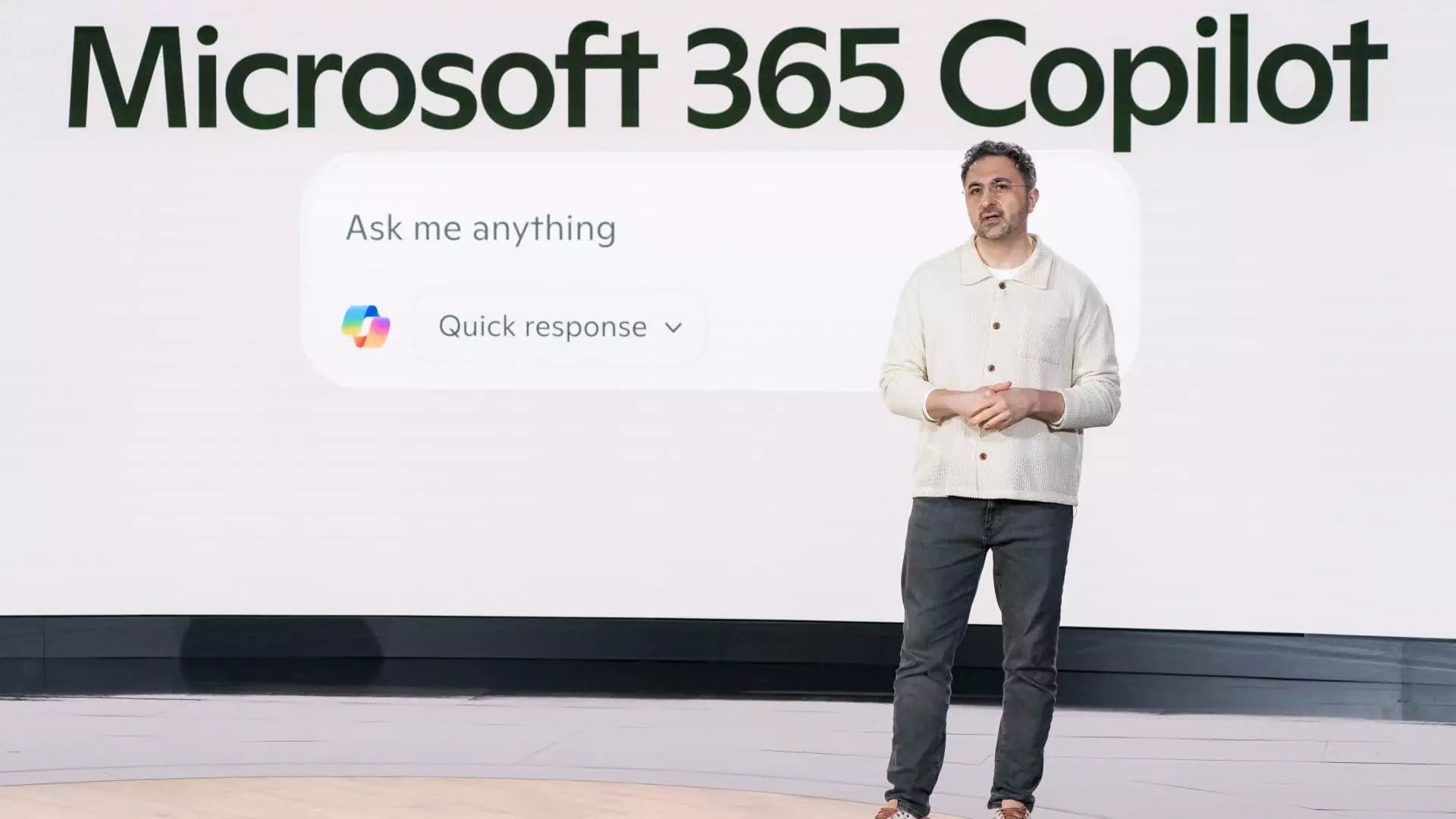In a tech ecosystem bursting with rapid advancements, Microsoft’s approach to artificial intelligence (AI) development stands out notably—in sharp contrast to the race for supremacy that characterizes many competitors in Silicon Valley. While some tech giants hurriedly scramble to be the first to unleash groundbreaking AI models, Mustafa Suleyman, CEO of AI at Microsoft, posits a radically different—and arguably more prudent—strategy. By deliberately opting to trail behind leading developments, Microsoft embraces a conservative stance that balances innovation with resource management.
This “off-frontier” approach, as Suleyman terms it, suggests a careful consideration of market dynamics and technological maturity. Rather than pouring assets into developing models that are potentially still in their infancy or rife with unresolved issues, Microsoft aims to refine and perfect its offerings by learning from early adopters. This means the company is likely to save significant costs while also honing in on specific use cases that can deliver immediate value rather than just flashy advances.
The Financial Logic Behind AI Development
Delving into Suleyman’s reasoning, it becomes apparent that cost-efficiency is at the forefront of Microsoft’s AI strategy. Building state-of-the-art models from scratch demands prodigious financial and computing resources, not to mention an intricate understanding of the domain’s evolving needs. By allowing others to take the initial plunge, Microsoft can assess the merits and shortcomings of the newly minted innovations before committing its considerable resources. This measured gamble is a hallmark of prudent fiscal management that is often overlooked in the high-stakes race of innovation.
For instance, while OpenAI can afford to launch cutting-edge initiatives like the much-discussed o1 reasoning model, Microsoft adopts a more thoughtful rollout, ensuring that when it does enter the space, it provides reliable and contextually relevant offerings. “It’s cheaper to give a specific answer once you’ve waited,” Suleyman remarked, underscoring this astute delay strategy that takes into account both financial implications and practical applications of AI.
An Evolving Relationship with OpenAI
The partnership between Microsoft and OpenAI offers another layer to this nuanced narrative. Following Microsoft’s staggering investment of approximately $13.75 billion in OpenAI, one might expect an unwavering allegiance; however, reports of emerging fissures have sparked discussions about the direction of their collaboration. As competitors like Oracle begin to enter the picture, this partnership is evolving to one that may reflect more independent ambitions than previously imagined.
Suleyman acknowledges the significance of nurturing internal capabilities, emphasizing that Microsoft must cultivate the ability to be self-sufficient in AI development in the long run. Optimal financial planning, the capability for independent innovation, and the willingness to partner selectively—these underpin a strategy that goes beyond mere dependency on external innovations. This evolves Microsoft from being merely a consumer of AI technology into a robust competitor on the global stage, albeit a methodical one.
The Dichotomy of Cutting-Edge Innovation and Practical Design
Another key consideration in Microsoft’s strategy is the dichotomy between breakthrough innovations and robust, reliable products. While it’s tempting for tech firms to chase the next big thing in AI, Suleyman stresses the importance of developing solutions that are not only effective but also user-friendly. This perspective is essential, especially as the number of everyday users interacting with AI systems increases exponentially. The integration of memory features into Microsoft’s Copilot illustrates this commitment to practical functionality over sheer technological complexity, aspiring to improve user experience rather than get bogged down in the intricacies of cutting-edge AI.
Moreover, by occasionally releasing open-source small-language models, Microsoft demonstrates its commitment to accessibility and democratization of AI technology, further distinguishing its position in a crowded market.
Through this strategy, Microsoft isn’t just avoiding unwarranted risks; it’s actively crafting a legacy of innovation that values durability and utility. While some may perceive the company’s moderate pace as a hesitation, those close to the industry recognize it for what it is: a deliberate and strategic alignment with long-term success. Embracing patience in fields characterized by instability may well be what distinguishes Microsoft in the evolving landscape of AI advancements.


Leave a Reply